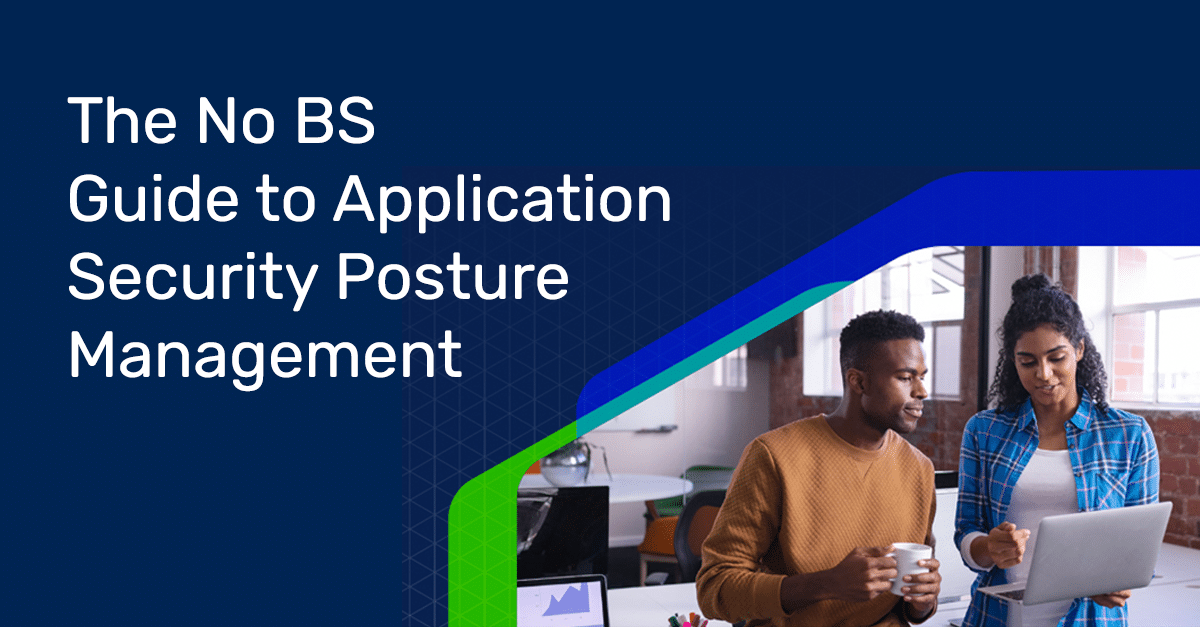
You’ve Heard About ASPM, But Are You Ready For It?

Embarking on the journey of integrating a new process or tool into an organization can be a significant and challenging endeavor. It’s not just about the initial implementation; companies need the assurance their investments will continue to add value and remain relevant over the long term rather than becoming obsolete shortly after deployment. This concern is particularly valid in the rapidly evolving field of application security.
However, with Application Security Posture Management (ASPM), the benefits are both immediate and enduring, especially for businesses deeply invested in software development. ASPM isn’t merely a transient trend; it’s a strategic approach that helps continuously monitor, manage, and improve an organization’s security stance.
But is your business ready for ASPM? This is the question we’ll help you answer in this blog. Additionally, we’ll offer guidance by outlining the initial steps to implement ASPM effectively.
How To Know If You’re Ready for ASPM?
Before embracing ASPM, organizations must gauge their readiness for an effective and streamlined ASPM deployment. A review of existing AppSec tools and pertinent information sources, including penetration test outcomes or bug bounty programs, is essential to initiate the process.
- What scanners are in place?
- How much data is being generated by these tools?
- How is the organization managing this plethora of information?
- Are you exporting snapshots to CSV files or working within the user interfaces of each respective tool?
The answers to these questions provide an organization with a better understanding of its existing application security program, facilitating the decision to adopt ASPM or not. Additionally, an honest self-reflection of current strategies for prioritizing remediation findings is vital. Is the methodology both efficient and effective? Or does it allow potential risks to go unnoticed or noticed but unaddressed? Does it overwhelm developers with false positives or findings that don’t matter in your environment?
Now that you have assessed your bases, ask yourself this: are you in a position to initiate change that will impart program-wide improvements to your application security program?
ASPM serves to pinpoint areas of improvement and align the organization’s strategy toward managing application security risks with a business-centric view of risk instead of a tool-centric view of risk. ASPM’s impact on an organization involves fine-tuning and augmenting current processes, targeting areas for enhancement, and fostering a more fortified application development landscape. Beginning with an informed understanding of your present situation will push you toward a strong and sophisticated application security stance.
So You Decided You’re Ready. Now What?
Initiating ASPM implementation within an organization begins by identifying and involving crucial stakeholders. Their collaborative participation fosters a comprehensive awareness of the organization’s security posture, laying the groundwork for well-informed decision-making.
Next, it’s time to assess various ASPM tools in light of your distinct use cases. Ensuring compatibility with all your applications, from legacy systems to new platforms and everything that falls in between. Selecting an ASPM solution that effortlessly melds and stays in sync with your existing development workflows and ticketing platforms, such as Jira, is vital. By doing so, developers are spared from adopting an entirely new set of tools; instead, the security measures are integrated into the systems and processes they are already accustomed to. This seamless fusion enhances the developer experience, consolidates the workflow, and optimizes security operations.
A crucial consideration in ASPM implementation is the evaluation of risk and threat modeling. Gaining a comprehensive grasp of your applications’ potential risks and threats will lay out a guide for ranking security risks. Likewise, selecting an ASPM solution that can grow with your organization and continuously track its performance is key to sustaining a strong security stance.
Successful ASPM implementation depends on user adoption. As businesses aim to retain top talent, ensuring an excellent developer experience becomes paramount. All team members, from developers to security analysts, should be proficient with the new tools and procedures. While developers play a pivotal role in both writing the initial code and addressing bugs, they typically aren’t security experts. Hence, a solution that meets the needs of both developers and security professionals is vital. Such a harmonized approach improves user adoption rates, amplifies the impact of your ASPM initiative, and paves the way for a more advanced and secure application development ecosystem in your organization.
The Brinqa Approach To ASPM
As the exploitable attack surface expands with advancements like cloud-native software and software development releases become faster and more continuous, organizations gravitate toward ASPM to attain a clearer and more secure stance on application security. ASPM serves as an effective means to oversee vulnerabilities by consolidating the cyber risk lifecycle across application security. Brinqa offers an ASPM platform, encompassing an automated solution that navigates every lifecycle phase, from unifying AppSec findings and prioritizing risks to streamlining remediation and generating actionable reports that motivate stakeholders to act. This approach amplifies efficiency and supports knowledgeable decision-making.
Brinqa Protects Your Entire Business
Unlike other ASPM solutions, Brinqa provides coverage beyond just application security to also encompass endpoints, traditional and cloud infrastructure environments throughout the entire cyber risk lifecycle. Its comprehensive coverage of the entire cyber risk lifecycle sets it apart from solutions that only address a single aspect. It ensures seamless management from asset inventory to risk prioritization, automated remediation, and posture management. This provides a panoramic security view of applications and the infrastructure they rely on.
Brinqa is the market leader in number of integrations. Support for many different data sources facilitates easy integration with an organization’s existing technology stack. It supplements this with a unified graph database, correlating all AppSec findings with business context and threat intelligence. This offers a complete and unified view of the application attack surface, fostering highly effective risk scoring and prioritization. The transparent process builds trust between security and development teams and enables customization to align with specific business requirements.
Brinqa’s approach to streamlining the remediation process aids security teams in promptly identifying developers responsible for vulnerabilities and expediting fixes. Key features like bi-directional sync with ticketing systems and mechanisms to validate the implementation of fixes enhance its functionality.
Finally, Brinqa’s flexible reporting enables businesses to customize reports to their needs. The platform’s all-encompassing view of the cyber risk lifecycle ensures reliable and accurate data, offering a comprehensive perspective of the organization’s security posture. This transparency fosters trust among stakeholders and solidifies the role of security teams as trusted advisors within the organization, making Brinqa a single source of truth for your application security posture.
It’s Easy to Get Started with Brinqa
Application security vulnerabilities and findings can easily overwhelm your organization. Brinqa helps you focus on what matters to the business, delivering a platform that orchestrates the entire cyber risk lifecycle across all your security tools, teams, and programs. Brinqa does this by creating a real-time model of all assets, vulnerabilities, and relationships across your attack surface. Moreover, Brinqa provides context-rich risk scoring that can be personalized to align with your specific business priorities. With its ability to convey risk in terms that are accessible and trustworthy to the broader business, Brinqa facilitates better communication between business applications, units, and risk owners. This, in turn, helps to cultivate a more cohesive and resilient security culture.
Embrace the approach already employed by industry leaders globally and strengthen your application security posture with Brinqa.
Related resources



